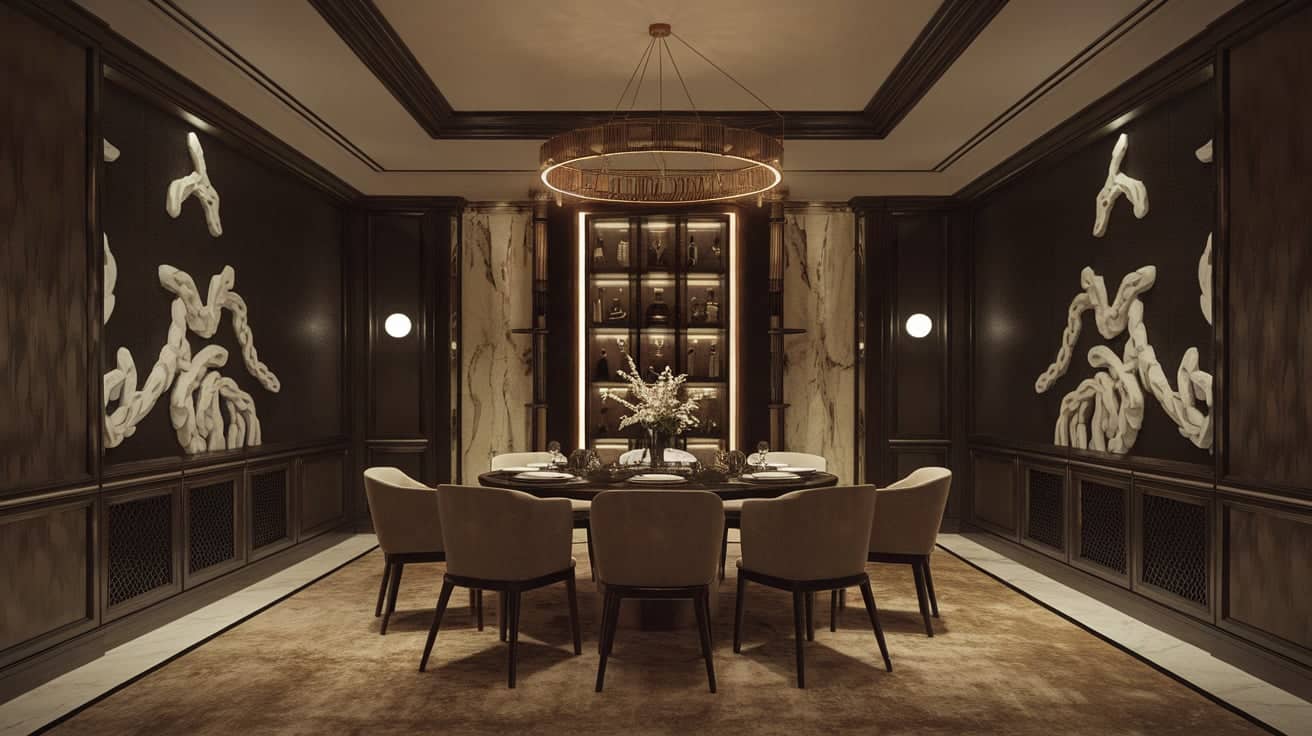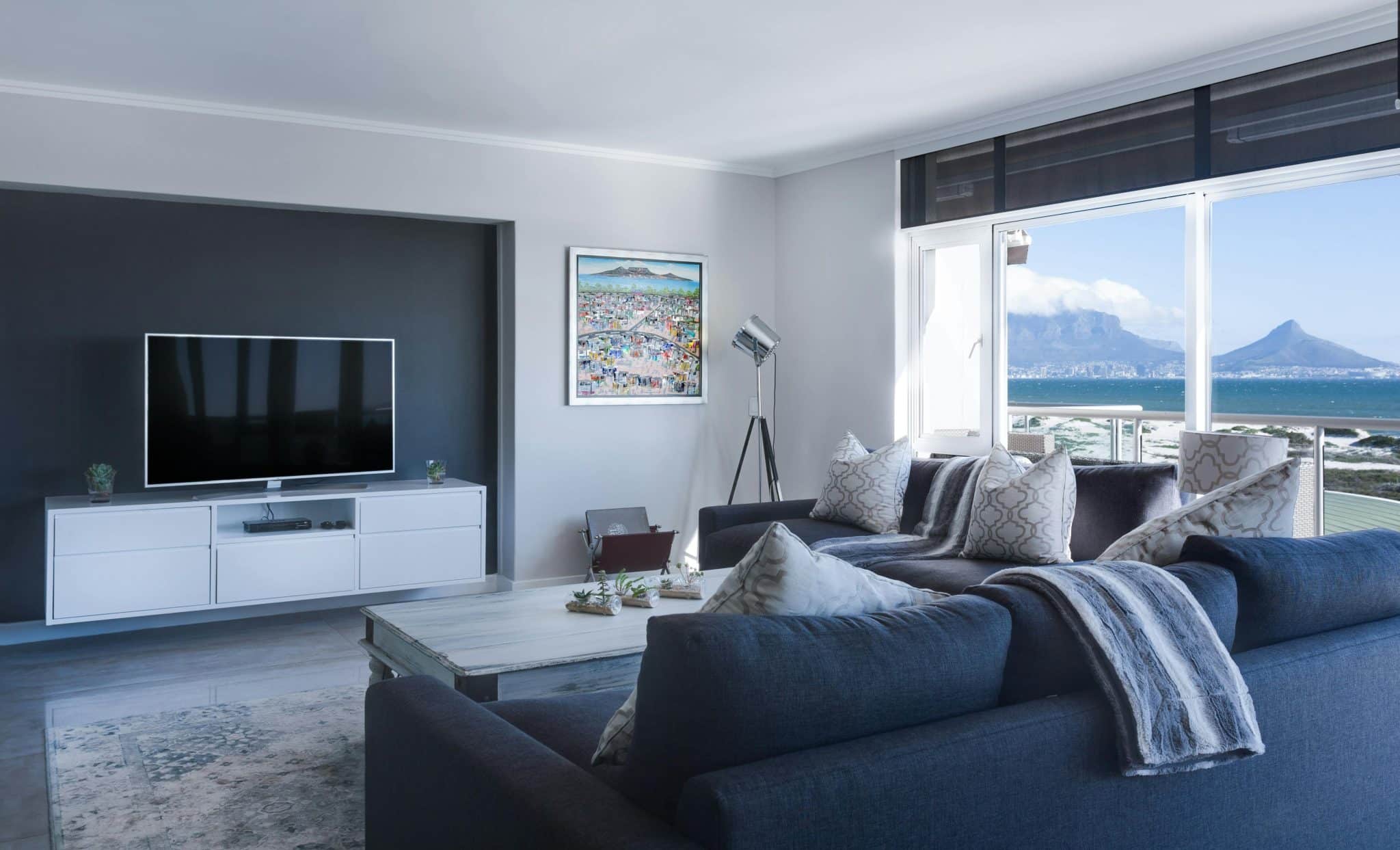Creating the perfect dark academia dining room can feel challenging when balancing moody and exquisite with practical dining needs.
Finding that sweet spot between intellectual charm and comfortable functionality often leaves many homeowners stuck at the starting line.
I promise there’s a simpler way to bring this scholarly atmosphere into your home without overwhelming the space. With the right vintage elements, thoughtful lighting choices, and curated decor, you can change your dining area into a sophisticated haven that tells your unique story.
This directory will walk you through the essential components of dark academia dining spaces, from color palettes and furniture selection to those finishing touches that capture the essence of literary intrigue and timeless grace.
What Is Dark Academia Dining Room?
- Dark academia dining room is a style of interior decoration that draws inspiration from traditional university dining halls, old libraries, and vintage scholarly aesthetics. In plain language:
- It features rich, dark colors like deep browns, burgundies, forest greens, and navy blues. The furniture is typically wooden, often antique or antique-looking, with a formal, classic design.
- Lighting is usually warm and dim, often coming from vintage-style lamps, wall sconces, or chandeliers. The room might have artwork like classical paintings, portraits, or academic-themed prints in ornate frames.
- Decorative elements include things you’d associate with old-world education: globes, vintage maps, antique books, brass objects, candles, and items that suggest intellectual pursuits or travel.
13 Elements Touches for a Cozy Dark Academia Dining Room
Change your dining room into a dark academic haven with rich colors, antique furniture, and vintage accents that create a warm, scholarly atmosphere perfect for meaningful gatherings.
1. Rich, Deep Color Palette
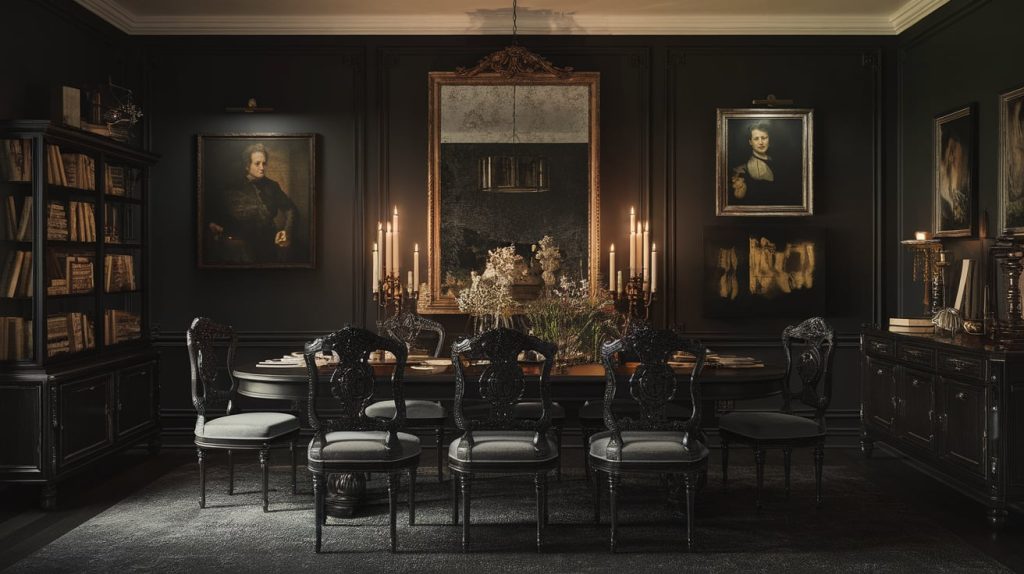
The heart of a dark academic dining room lies in its colors. Think deep burgundies, forest greens, and charcoal grays, which wrap the room in warmth while creating drama.
These rich tones aren’t just pretty; they instantly build that scholarly vibe. I fit that painting to just one wall; these deeper shades can transform the space without making it feel like a cave.
Mix in some mahogany or walnut accents through furniture, and you’ve got depth without darkness.
2. Antique Furniture
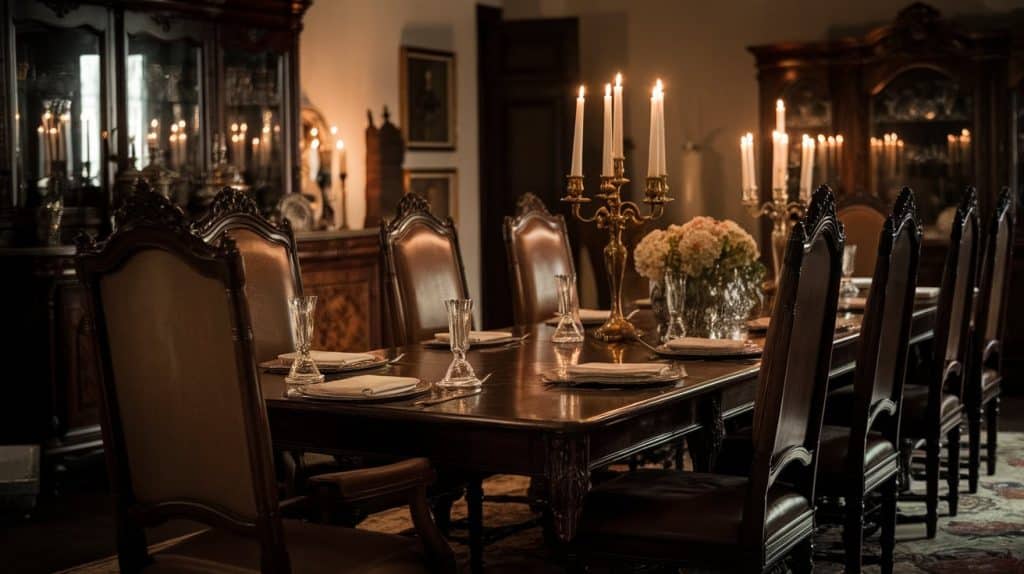
Scratches and worn edges on old wooden tables tell stories. At thrift stores or estate sales, look for chairs with curved backs and tables with carved legs.
You don’t need a matching set of mix pieces that look like they’ve lived through different decades. The imperfections are what give your dining space that lived-in, scholarly feel.
3. Candlelight & Mood Lighting
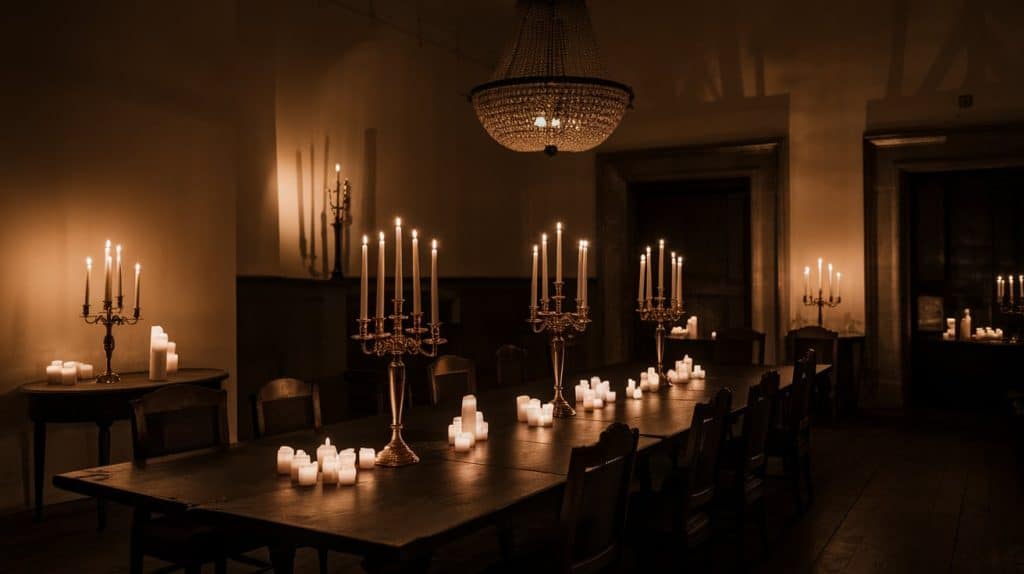
Skip the harsh overhead lights that feel like a hospital. Instead, create a captivating atmosphere with soft, layered illumination from multiple sources. A vintage chandelier hanging low over your dining table becomes both a statement piece and a gentle light source.
Wall sconces positioned strategically around the room cast interesting shadows and provide ambient light that fills empty corners.
The real magic happens when you scatter candles throughout the space and cluster them on mantels, side tables, and even the dining table for special occasions.
4. Layered Textiles
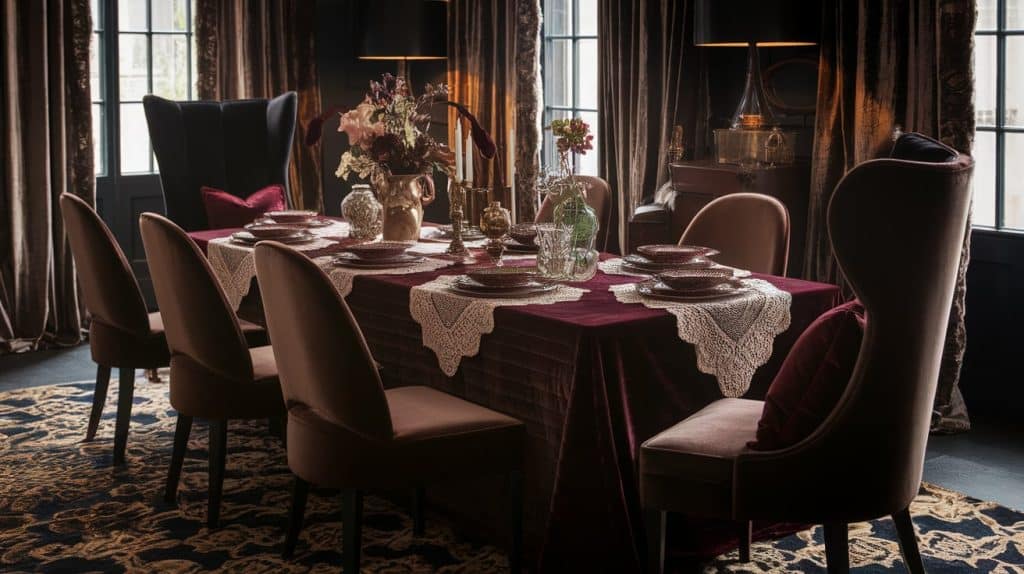
Fabrics add warmth to a room that might otherwise feel cold. Drape a velvet runner down your table’s center, creating a rich foundation for place settings and centerpieces. Add cushions to wooden chairs that need softening mix patterns and textures while keeping a consistent color palette.
Hang heavy curtains that puddle slightly on the floor, framing windows with elegant folds that absorb sound and soften harsh light. These touchable elements transform dining spaces from merely functional to genuinely inviting.
5. Dark Wood Accents
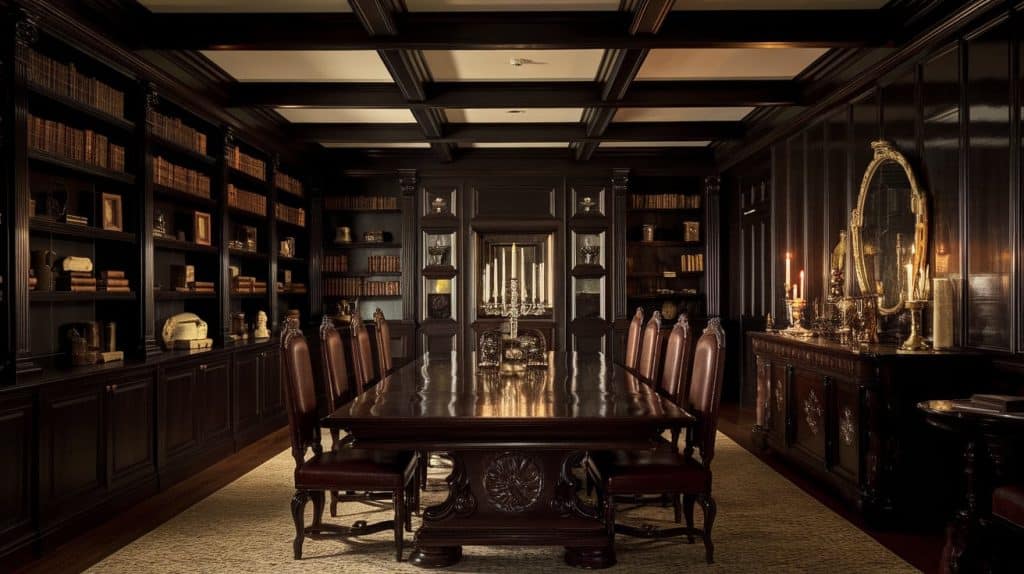
Mahogany, walnut, and ebony-stained woods ground your space in tradition. Look for sideboard cabinets, frames, or even wooden bowls that bring depth to the room. Don’t worry about everything matching perfectly, varying wood tones actually make the space feel more authentic, like items collected over time.
These darker elements create visual anchors that balance lighter colors and add a sense of timelessness. Mix antique pieces with newer finds for a curated look that tells your personal story.
6. Grand Book Displays
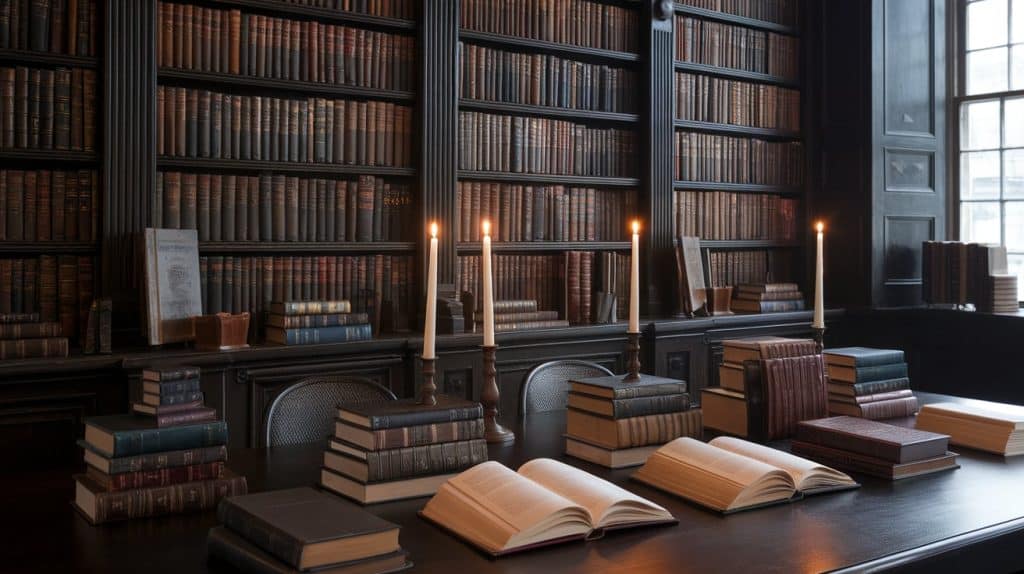
Books aren’t just for reading; they’re decor in a dark academic space. Stack vintage hardcovers on your sideboard, display a few with interesting illustrations, or place one beside each place setting as unexpected place cards. The yellowed pages bring instant character without trying too hard.
Choose books with worn leather bindings or faded cloth covers for authentic charm. Leave some open to show beautiful typography or illustrations that complement your color scheme, creating thoughtful conversation-starters throughout the room.
7. Vintage Art and Portraits
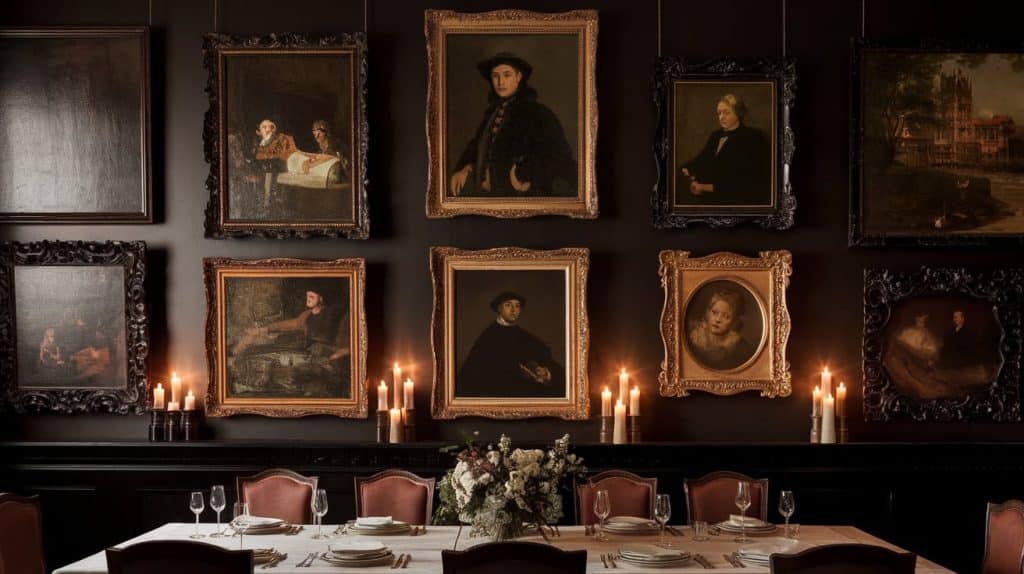
Those serious-looking faces in gilded frames create instant atmosphere. At flea markets, hunt for portraits, landscapes with moody skies, or still-life paintings. Don’t stress about finding valuable art; it’s the dark colors and ornate frames that matter. Group several smaller pieces for a bigger impact.
Mix in etchings, botanical prints, and the occasional contemporary piece with vintage styling. The contrast between old and new adds depth while maintaining the scholarly aesthetic. Even reproduction prints work well when properly framed in antique-inspired moldings.
8. Natural Elements
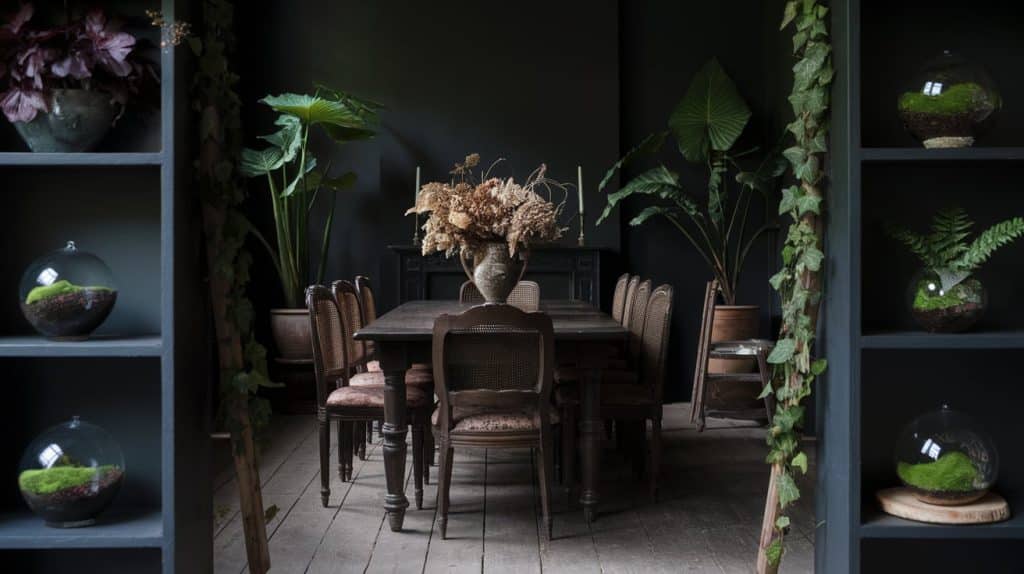
Nature softens the scholarly intensity. Arrange dried hydrangeas in a copper vase, display pinecones in a wooden bowl, or hang preserved botanicals in dark frames. These touches add life to a room that might otherwise feel too formal, creating a balance between studious and welcoming.
Incorporate seasonal finds like branches with autumn leaves, winter berries, or summer wildflowers to keep the space feeling fresh. The organic shapes and textures create pleasing contrast against the straight lines of books and furniture while reinforcing connections to the natural world.
9. Gold or Brass Accents
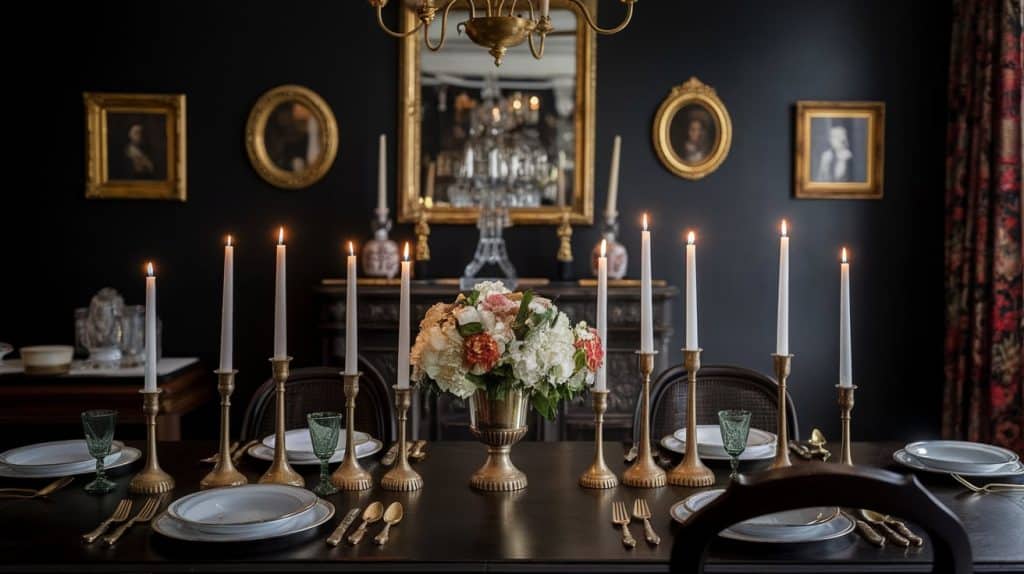
Metallic touches catch candlelight beautifully. Look for tarnished brass candlesticks, gold-rimmed glasses, or vintage napkin rings with patina. These glints of metal elevate the space without making it feel fancy. The slightly worn quality keeps things grounded and authentic rather than showy.
Mix metals with confidence; brass alongside copper or bronze creates depth and interest. Incorporate metal picture frames, drawer pulls, or serving pieces that show their age and history. These warm-toned accents add subtle luxury while maintaining the cozy, lived-in feeling essential to the aesthetic.
10. Classical Music Corner
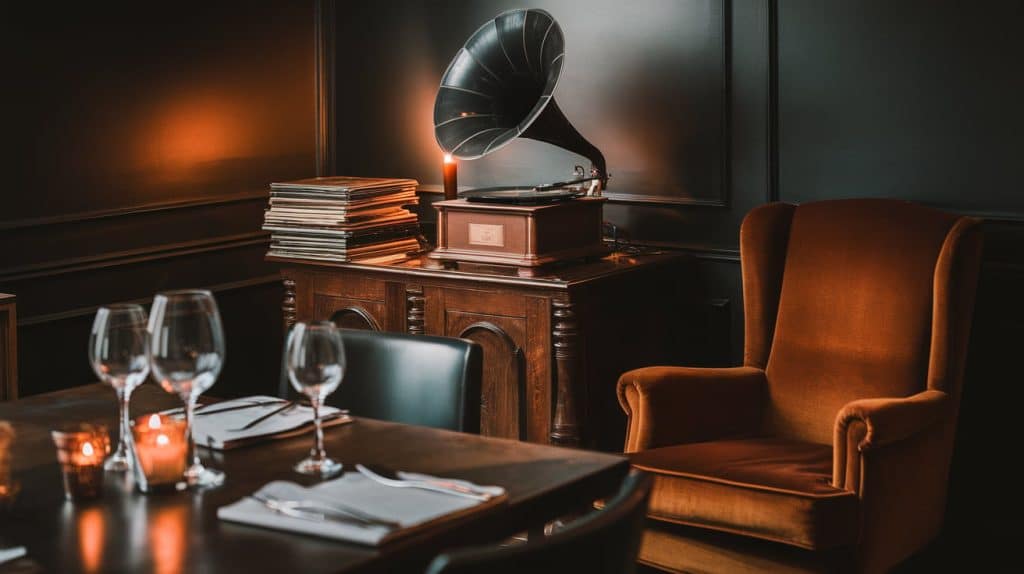
Dinner feels different with the right soundtrack. Tuck a vintage record player on a small table or shelf nearby, displaying album covers as art.
Even if you actually stream your music, the visual of music-making tools creates ambiance and becomes a natural conversation starter during meals.
Add a small collection of vinyl records, sheet music in a leather folder, or even an old instrument like a violin on display. This dedicated space celebrates the relationship between music, conversation, and dining, enriching the sensory experience of your gatherings.
11. Intricate Tableware
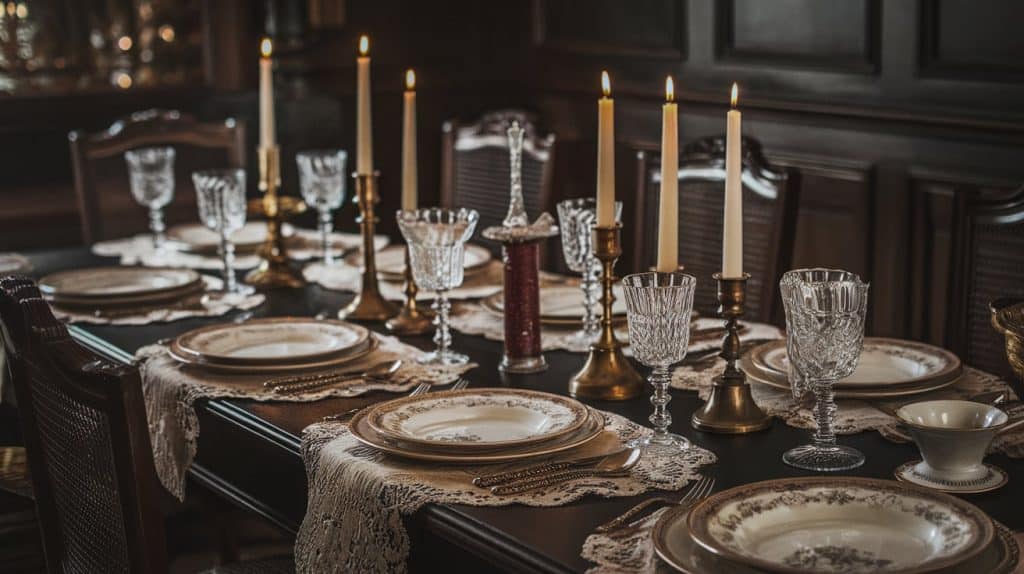
The tableware you use can transform a meal. Look for mismatched china with delicate blue patterns, crystal glasses with a bit of weight, and silverware that feels substantial.
These details elevate everyday dinners and create an atmosphere that makes guests feel like they’ve entered another era. Thoughtful tableware adds charm and elegance to even the simplest meals, turning them into memorable experiences.
12. Statement Mirror
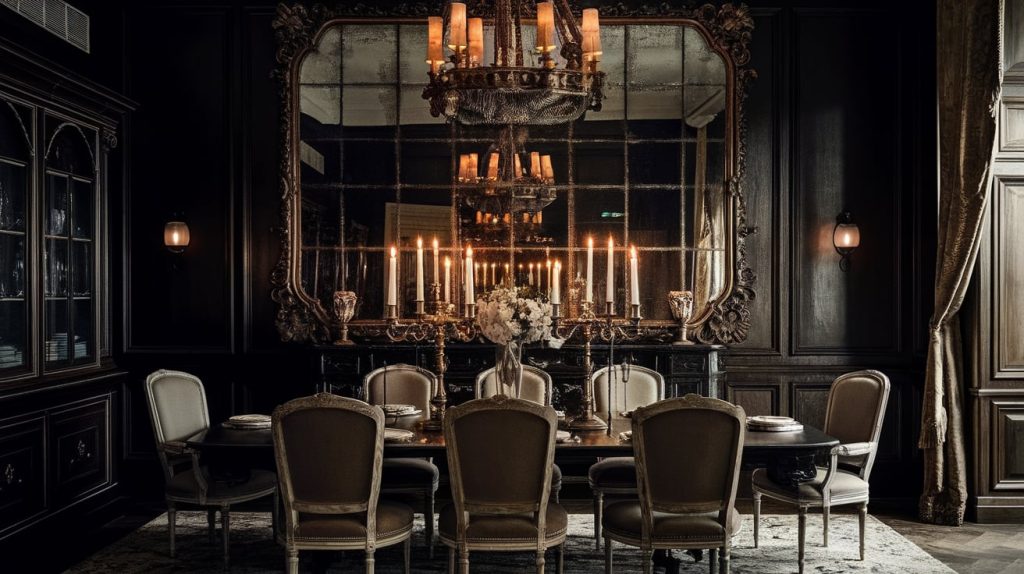
A large, ornate mirror with a vintage frame does more than reflect—it captures the warm glow of candlelight and enhances the room’s architectural charm.
Position it to catch flickering flames and guests’ lively expressions during dinner. The slightly tarnished glass of an older mirror adds an authentic character that modern mirrors often lack, creating a timeless atmosphere that invites both beauty and conversation.
13. Old-Fashioned Clocks
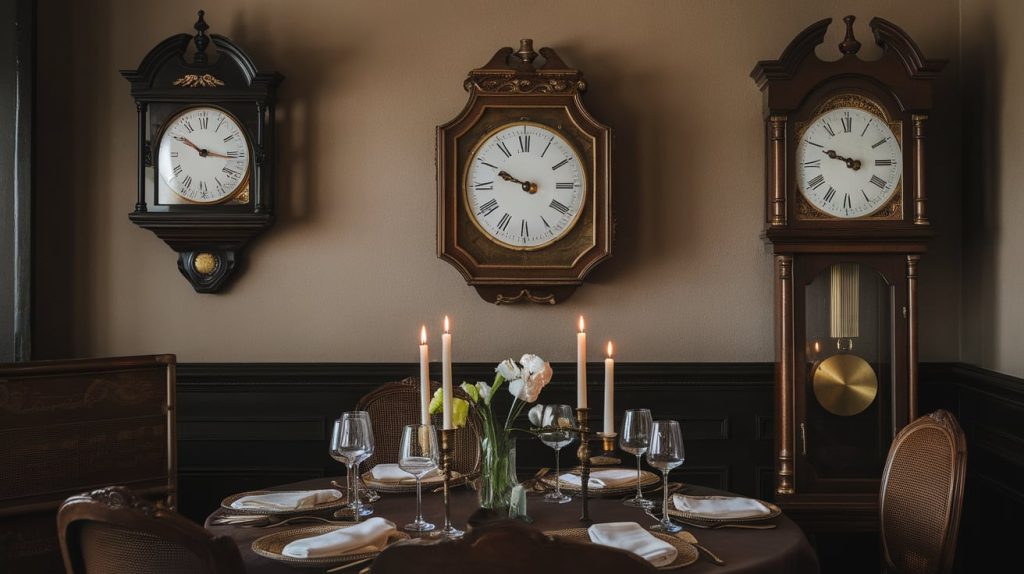
A ticking clock adds gentle rhythm to dining room conversations. Look for weathered desk clocks, vintage kitchen timers, or wall clocks with visible gears.
Beyond telling time, these pieces remind us to slow down and savor both the meal and company, perfectly aligned with dark academia’s thoughtful vibe.
Conclusion
Creating a dark academia dining room isn’t just about being beautiful; it’s about crafting a space where time slows down and conversations deepen.
By incorporating rich colors, vintage furniture, and thoughtful lighting, you’re not just decorating; you’re building a sanctuary for meaningful connections.
Remember that imperfection adds character. Scratches on an antique table or the slight tarnish on brass candlesticks tell stories that perfect items never could. Please start with the elements that speak to you most, whether it’s a dramatic paint color or a collection of vintage books.
Ready to transform your dining space? Take one element from this guide and implement it this weekend.
Frequently Asked Questions
What Is the Criticism of Dark Academia?
Critics say dark academia can romanticize elitism, lack diversity, and glorify unhealthy behaviors like overwork and isolation.
Is Harry Potter a Dark Academia?
Yes, Harry Potter has dark academic elements, such as ancient books, Gothic architecture, school uniforms, and academic settings.

